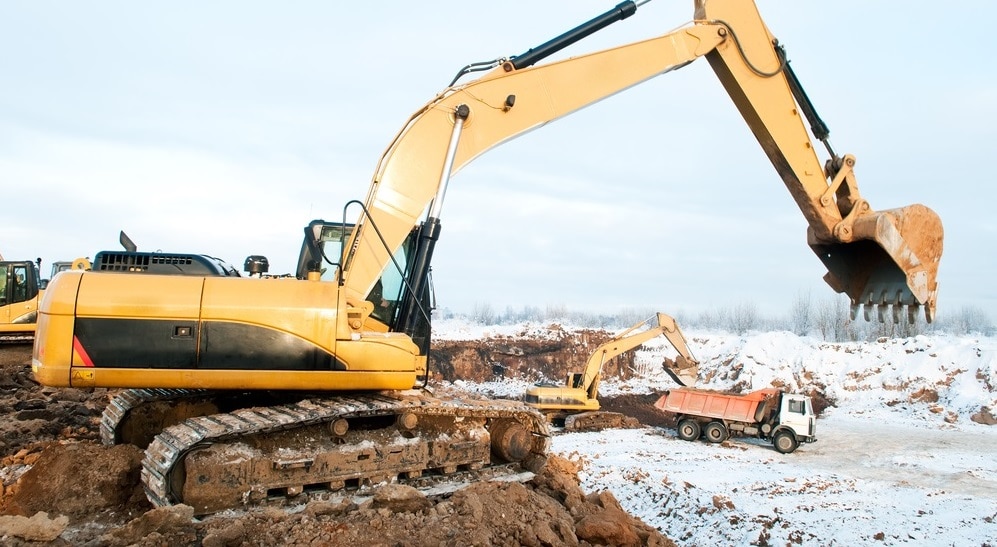Written by Cary Freed, ARM (Associate Risk Management) – SECURA Risk Management Consultant:
If you’re squeezing in a few jobs before the gound freezes, your mind is probably focused on wrapping up your client commitments rather than preparing for the next season. We’ve all put off our fall maintenance lists too long, but winter waits for no one. It’s easy to get frustrated as we rush to get our checklists done before the cold air sets in. Avoid the added stress, and plan ahead for a successful transition from fall to winter.
Hear are a few tips to help you prepare your heavy equipment for winter, whether it’s stored away until spring or used year-round.
Enclosed storage
Do you have space for all your equipment out of the elements? Your equipment is and investment, so it’s worth making sure you have access to indoor storage before the weather turns cold.
Inspect your equipment
Have you been putting off any maintenance concerns? Fall is a great time to take care of any normal wear and tear replacements. That way, you’re ready to get rolling next spring.
Hydrate the hydraulics
Before the temperature falls, check all of your hydraulics and add the correct lubricants for each piece of equipment. Condition your hoses to avoid cracks, especially if you continue working through the winter in cold climates.
Run the engine
Assuming you have everything running smoothly all winter, let your engine warm up to proper operating temperature every time you use the equipment. This helps it operate as efficiently as possible and prevents cracks, leaks, and other costly breakdowns.
Use engine block heaters
Equipment is always at the ready when the engine block is kept warm through the winter. Invest in heaters that are appropriately sized for your engine and weather conditions.
Proper tire inflation
Tires are always important, but traction becomes even more important in winter. Keep tires inflated to the recommended levels, remove counterweights when not in use, and monitor the tires for wear and debris when you take your heavy equipment out in the elements.
Don’t forget the fuel tank
Fill up your fuel tank at the end of the day. Not only will this help you save time when you use the equipment again, it helps ensure your fuel tank and lines don’t freeze. Check your system for leaky caps, water, or sediment in the fuel, and filters that may need to be replaced.
Battery care
Everything seems to take a little longer to get moving in the winter, but you can avoid costly delays by making sure your battery starts. Keep your batteries fully charged and out of the elements to help them turn over on the first try. If you won’t be using the equipment, remove the battery and store it indoors to prevent freezing. Remember, trying to jumpstart a frozen battery could cause it to explode.
For more professional insights, follow us on LinkedIn.

